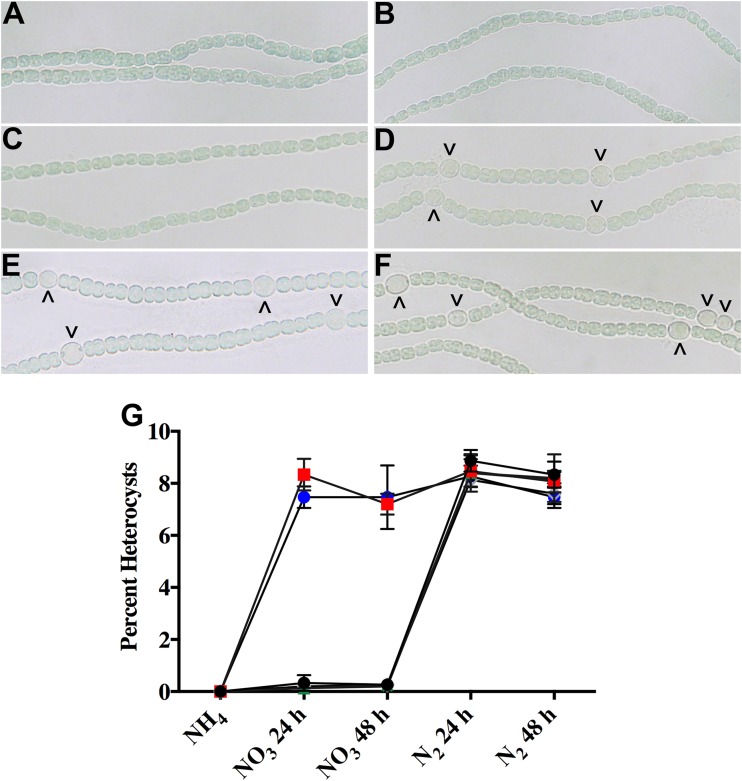FIG 2.
Phenotype of the ΔtrpE mutant (UHM335) under various growth conditions. Bright-field micrographs of the wild type (A, C, E) and UHM335 (B, D, F) during growth on ammonia (NH4) (A, B), on nitrate (NO2) (C, D), and without a source of combined nitrogen (N2) (E, F). Carets indicate heterocysts. The percentage of cells that were heterocysts in individual cultures was tracked over time as the source of nitrogen was varied (G). Cultures were initially grown with ammonia, and percentages of heterocysts were recorded. Ammonia was then replaced with nitrate, and heterocyst percentages were determined after 24 and 48 h. Nitrate was then removed from the culture medium, and heterocyst percentages were determined after 24 and 48 h of growth with dinitrogen as the only source of nitrogen. Average heterocyst percentages were determined from counts of 500 cells in three cultures of the wild type (black), UHM335 (red), the wild type with a plasmid containing PpetE-trpE-YFP (green), UHM335 (asterisks) with a plasmid containing PpetE-trpE-YFP, UHM335 with the trpE gene (open diamonds), and UHM335 with the trpE gene containing the mutated HetR binding site (blue). Error bars represent standard deviations.

